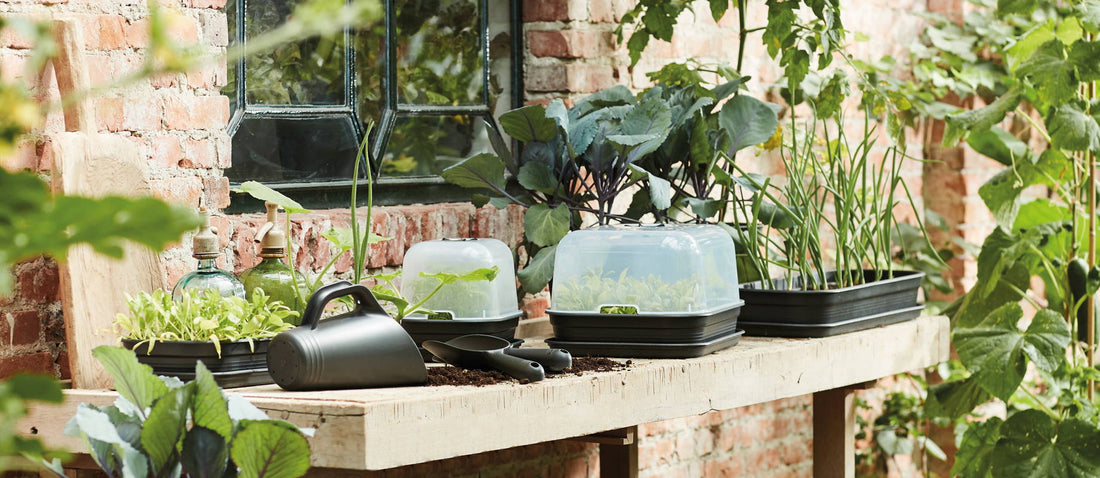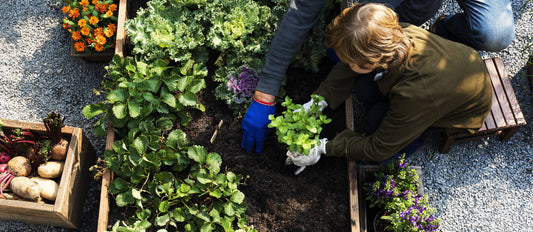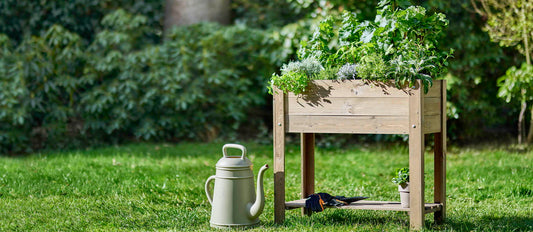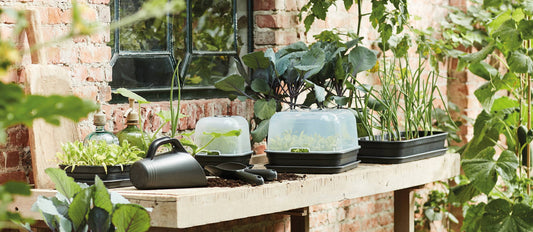Sowing indoors is an important part of vegetable gardening. Start fragile types of vegetables and fruit indoors before they go outdoors. This is called sowing indoors. Green fingers come in handy when sowing indoors. It is important that you pay close attention to what the young plants need. But don't worry, if your fingers aren't quite so green, Bakker can lend a hand. In this blog, we tell you everything you need to know about sowing indoors.
Why do you have to sow indoors first?
Some crops need a lot of warmth and light to germinate and to ultimately be intensely flavourful. Tomatoes, peppers and chillies are used to growing in warm temperatures. If you plant the seeds outdoors in a cooler climate, they might not germinate or your vegetables might not taste as good.
There are also some varieties that require a very long growing season. This can make it necessary to start growing during the winter months. Since it's still too cold outside, you can easily start your vegetable garden indoors. Start broccoli or celeriac indoors, for example.
Finally, many vegetable gardeners start indoors so they can enjoy their harvest earlier. If you start sowing in a greenhouse, you can plant a lot of crops earlier and harvest earlier.
Please note: a lot of vegetables and herbs can be started indoors, but not all of them. It is not advisable to start root vegetables like carrots, radishes or parsnips indoors.
Sowing indoors requires a bit more attention than vegetable gardening outdoors. Start planting the seeds in special nursery pots. These pots are made of biodegradable material so you can plant them in a pot or garden planter later. Fill the pots with a mixture of potting soil for vegetable gardens and vermiculite. Vermiculite is a mineral that absorbs water and fertiliser well. This keeps the potting soil mixture nice and airy, which is good for the roots.
Place the pots in a bright, warm spot. The seeds need heat and moisture to germinate properly. Make sure that you don't give them too much water or the roots may turn mouldy. Once they germinate, put the pots in a place that is a little cooler, otherwise the stems will grow too quickly and become floppy. A place with a temperature of about 15 degrees Celsius is perfect. Once you have little plants with more than just a stem, you can put the nursery pots in a real flower pot. Add fertiliser and water more often.
When can the plants be moved outdoors?
This differs per type of vegetable or fruit. Many crops can already be moved outside in April as the weather warms up. Vegetables that are a bit more sensitive to cold can't be moved outside to the vegetable planter until the end of May. Of course this depends on the weather. Always read the plant label on the packaging or product page on our website for specific information.
When you want to move the plants outdoors, it's important to harden them off first. Hardening off means moving the plants outside every day for a longer time to let them get used to the outside air. After four or five days, the crops can be planted in the vegetable planter or open ground. Remove the plants from the pots and loosen the soil a bit. Then dunk the roots of the plant in a bucket of lukewarm water. This way the plants can absorb water well for the transition to their new place. Then it's time to put them in the ground. Dig a hole that's a bit deeper than the height of the pot the plant was in first and put the plant in the hole. Then fill the hole with fresh potting soil for the vegetable garden planter and press it down lightly. After a week, the plants should start growing again when the roots take hold of the new soil.
Would you like to start your own vegetable garden? Read everything you need to know in our blog and take a look at our extensive vegetable gardening range. You'll find all of our seeds and other growing essentials there.




